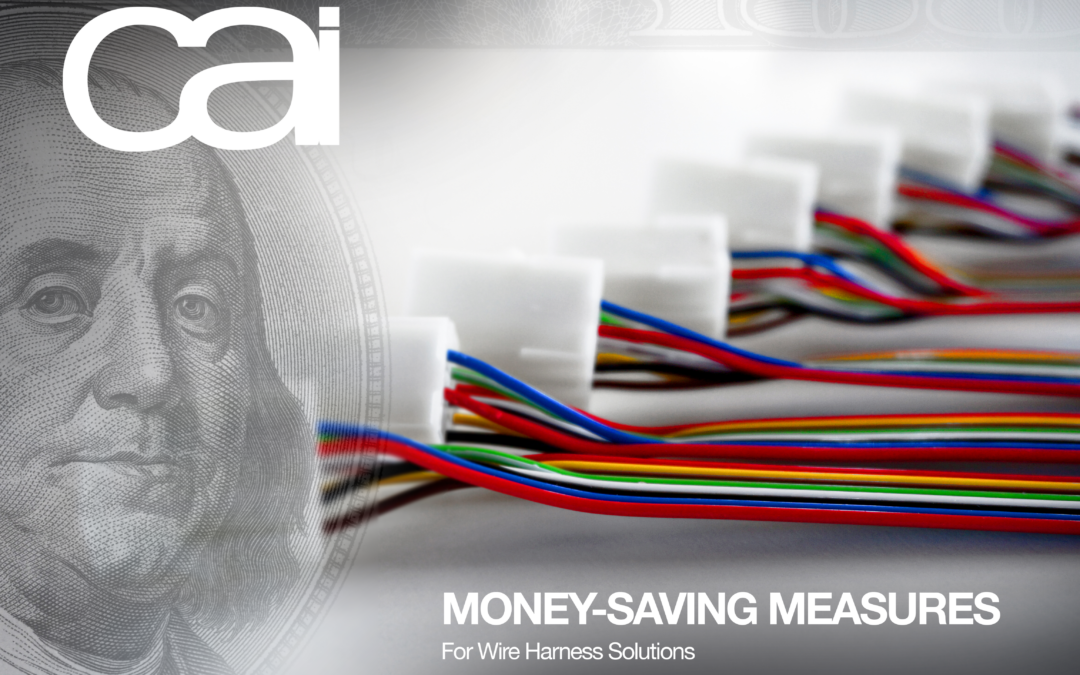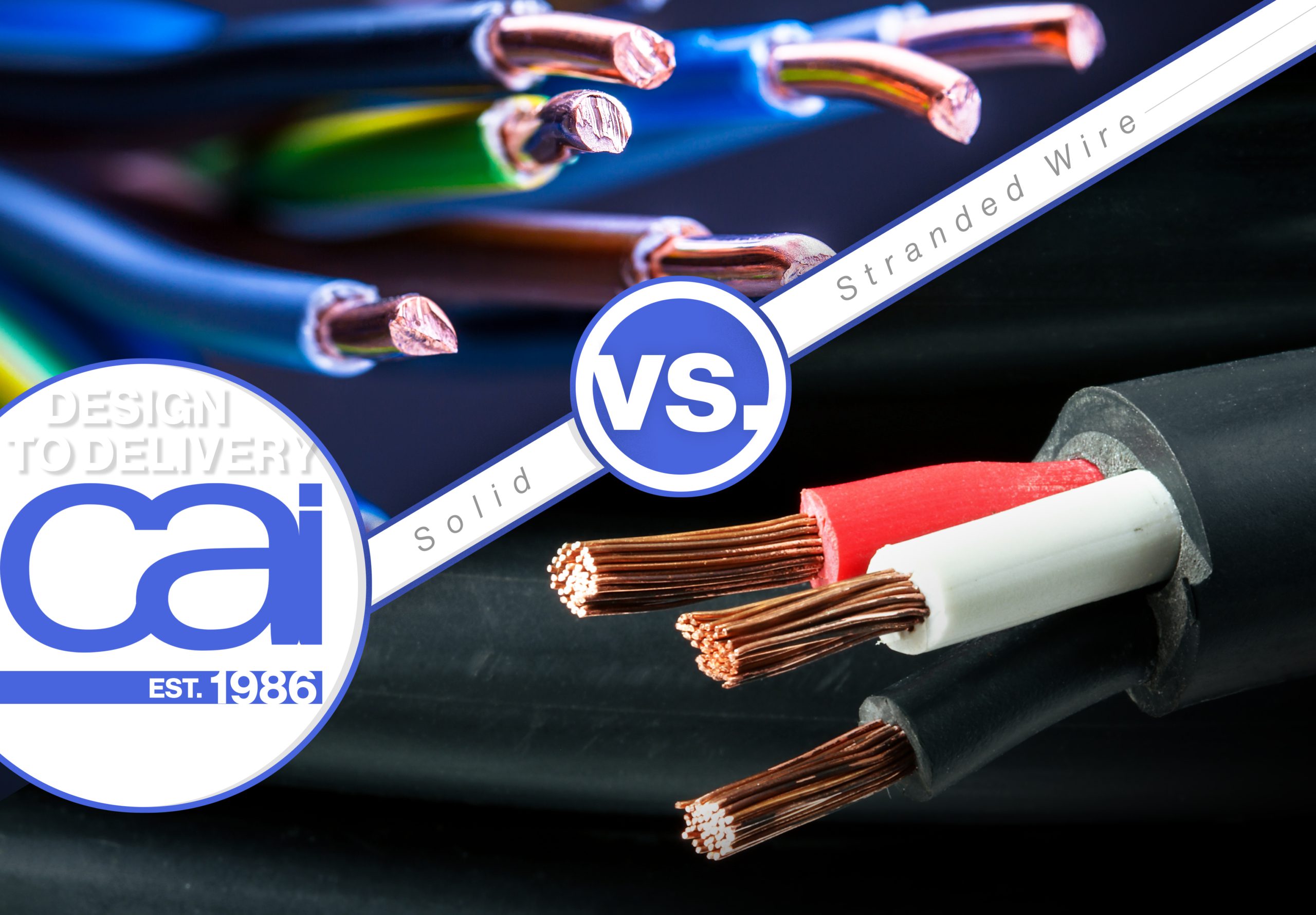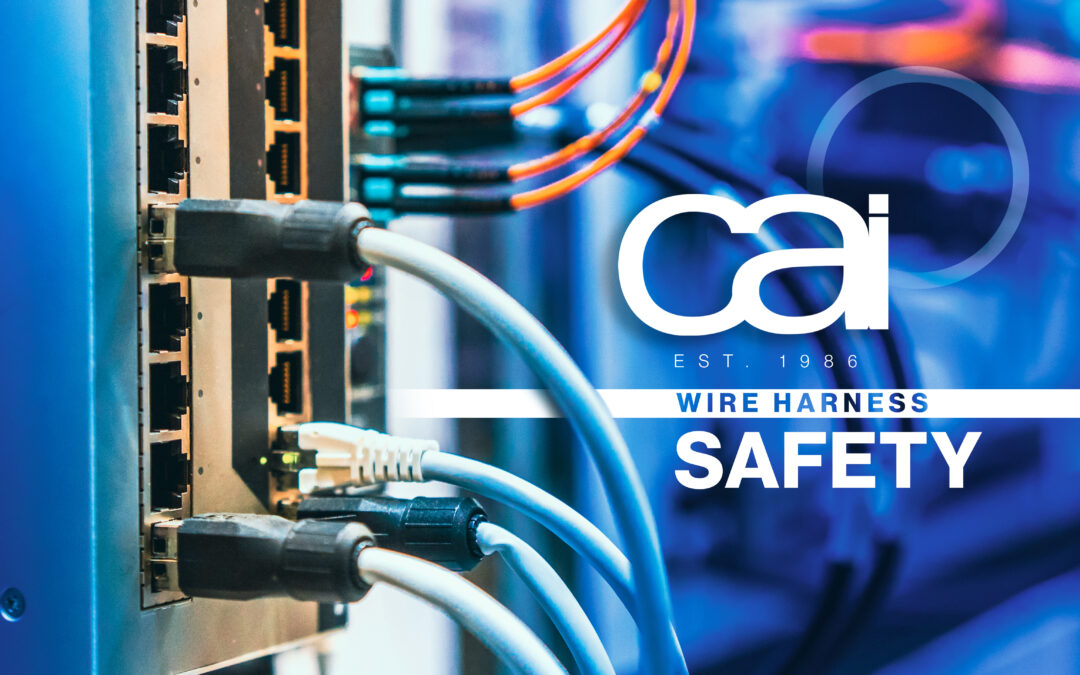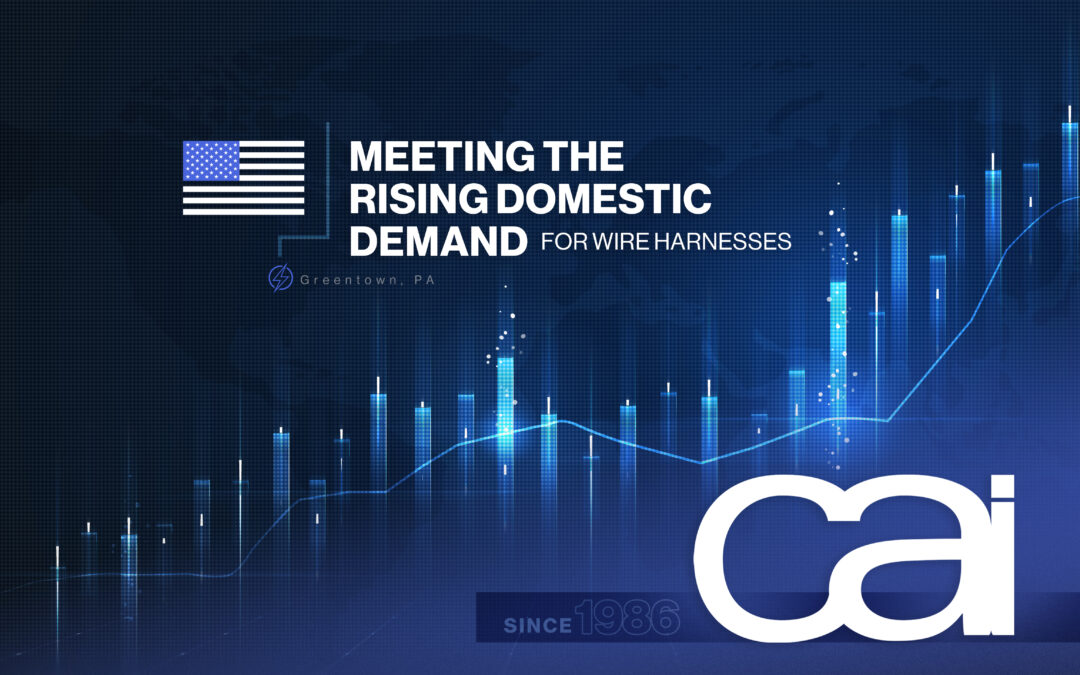The Pros & Cons of the Two Types of Electrical Wires
One of the key decisions to be made when manufacturing an electrical system, such as a wire harness or cable assembly, is whether to use solid wires or stranded wires.
Every electrical wire includes conductive material, typically copper, that is responsible for carrying electricity — and the power and data in it — from one place to another. Conductors can be constructed in different ways, chief among them being stranded or solid. A solid wire refers to a single solid metal core while a stranded wire consists of multiple individual strands of smaller-gauge wires wound together to create one larger-gauged bundle.
When choosing between stranded and solid wires, there are a number of considerations including type of metal being used, environmental conditions, durability requirements, and costs. The appropriate wire gauge is determined based on factors such as the wire’s application, amperage load, the current frequency that passes through the wire, and the resulting power dissipation.
For over 35 years, CAI has produced countless custom wire harnesses, cable assemblies, and other electrical components for a wide variety of industries and companies around the globe. Before your next electrical project, consider trusting CAI to handle your custom electrical component needs.
Because each wire type has its own advantages and disadvantages, it’s important to know the difference between the two in order to pick the ideal one for your application.
Solid Wire
A solid conductor is made by drawing down a rod using a series of progressively smaller dies to reach the desired gauge. Because the metal gets thinner and more brittle as it is stretched, the wire is heated using a process called annealing in order to strengthen the conductor and make it more malleable and ready for use.
Due to its single, continuous rigid structure, a solid wire offers long-lasting durability, greater strength and stability, easier termination, and more consistent performance when compared to stranded wire. Less expensive than stranded wire, solid wire is also more resistant to corrosion and signal distortion from EMI, due to its solid construction and consistent conductivity. Because of its thickness, solid wire has a decreased surface area that reduces dissipation. However, it is heavier and less flexible than stranded wire, making it more susceptible to breaking when undergoing excessive bending.
Because its manufacturing process is faster and includes fewer steps, solid wire is easier to manufacture. The twisting process for stranded wire requires more time and, inevitably, more money.
Better at maintaining its shape over time, solid wires are the rugged choice for outdoor, heavy-duty, and high-current applications and those where the wire or cable is mostly stationary, such as permanent installations in homes and buildings.
Stranded Wire
Stranded wire is made by first drawing and annealing individual strands of the conductive material (commonly 30 or 34 AWG) and then running them through a machine that wraps those strands around a core wire to produce the one desired overall gauge. The more strands, the stronger and more malleable the wire becomes. The wires can be wrapped in a variety of ways, inducing concentrically, bunched, and rope-laid.
The bundling of individual strands produces a more flexible wire but one susceptible to splitting or servering. Stranded wire is better suited for snaking along complicated angles and more likely to resist damage or breakage from movement and consistent vibration. Preferred for indoor use and situations where frequent twisting and bending are needed to connect components, stranded wires are used in wires and cables for a wide variety of applications, from circuit boards and speakers to robotics, portable electronics, and electromechanical assemblies.
Though the gauge may be the same between a solid wire and stranded wire, the solid wire would have less surface area and therefore a higher load capacity, less impedance, and lower voltage drops over long distances. Due to the air gaps inherent in twisted strands, stranded wire doesn’t heat up as quickly as solid; however, those gaps make the wire unable to carry as much current and increase its surface area which means less resistance to corrosion. Such a wire may be coated with tin or another metal to offer enhanced protection from moisture and other threats.
When selecting a wire type, it’s important to take into account the particular requirements of the job and adhere to pertinent standards and codes. Ask yourself relevant questions such as how flexible does my wire need to be? Is the surrounding environment a top concern that could affect performance and durability?
To summarize, solid wires typically offer greater strength and durability, are easier to manufacture, and are better at guarding against such threats as corrosion and EMI. Stranded copper is much more flexible, making it easier to install and manipulate in tight spaces.
Need help? CAI has the experience, know-how, and integrated processes to handle all your electrical component needs. For expert assistance designing and custom manufacturing your electrical system, don’t hesitate to contact us to discuss your unique application and project vision.





